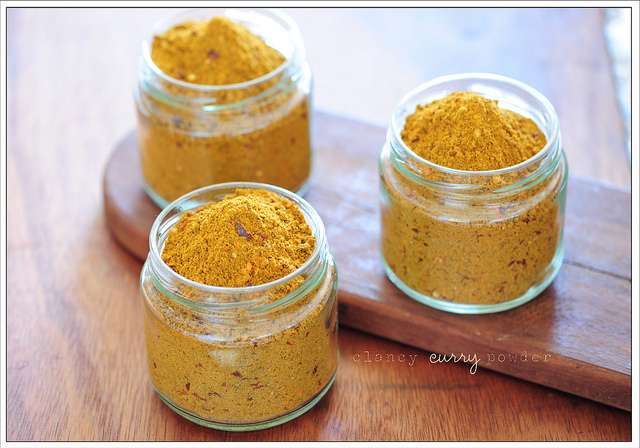There are many natural options for coloring your soap. Photo courtesy of Flickr user jules-stonesoup.
There are many options when it comes to coloring your homemade soap. Artificial colorants are often more vibrant than natural colorants, but many people like the idea of using all-natural ingredients in their soap. This post focusses on natural soap colorants, but you can read more about the various soap colorant options in our comprehensive post by clicking here.
There are also safety concerns with some artificial colorants, and they can have some unanticipated effects on the final soap product. If you decide to use natural colorants for your soap, there are endless possibilities to choose from, and you can give your soap almost any hue you desire.
Many of the natural materials you can use to color soap can be found in your kitchen, or local supermarket, and many are already used to color food and drug products.
These dyes can easily be extracted from fruits, vegetables, spices and even your morning coffee.
For example, beets will yield a dye that is bright purple, and depending on how much you use, will turn your soap pale pink to a deep red. To make the dye, cut the beets into half-inch slices, and boil three cups of beet slices in two cups of water.
Red onions will produce a red dye that will turn your soap reddish-brown; to make the dye you’ll use only the skin, so the onions can be used for cooking later (read more about using red onions here).
Remove the outermost dry layers of skin, and the first moist layer; boil two cups of skins in three cups of water.
Red cabbage, oddly enough, produces an inky blue dye, which can be used to color soap pastel to deep blue.
Shred one head of cabbage, and boil it in two cups of water until the cabbage itself is a pale blue.
If the dye you get using these methods isn’t concentrated enough for your tastes, simply boil the mixture longer to evaporate more water.
Be sure to strain the liquid through cheesecloth before use, to ensure that any vegetable matter is removed.
Typically, you will add your homemade dye at trace, or when hand-milling a batch of cold-process soap.
You can use spices to dye soap as well, but the dye needs to be oil-based, instead of water-based.
Making an oil-based dye from spices involves three simple steps. First, mix two teaspoons of the spice with two tablespoons of oil. Let the spice soak in the oil for a while.
Next, heat the oil and spice mixture in the microwave for one to two minutes. Finally, strain the mixture through cheesecloth, or a coffee filter, to remove the spice particles, and you’ll be left with an oil-based dye that retained the color of the spice you used. Here is a list of some common food-based, homemade dyes, and the colors they will yield in your soap. (Always test dyes before use, to avoid unwanted results in final soap product.)
oAlfalfa – medium green
oAlkanet – deep purple to muted blue
oBeet root – muted pink to red
oGround calendula petals – yellow
oCarrots – yellow to orange
oGround chamomile – yellow-beige
oChlorophyll – medium green
oCinnamon – tan to brown (can be an irritant)
oCloves – brown
oCochineal powder – deep red
oCocoa powder – brown
oCoffee – brown to black
oComfrey root – light milky brown
oCucumber – bright green
oCurry powder – yellow
oElderberries – light brown (steep in lye solution)
oHenna, ground – olive green, drab green, greenish-brown
oIndigo root – deep blues (can stain)
oJojoba beads – come in many colors, and are exfoliating
oKaolin Clay – white
oKelp/seaweed – green
oMadder root – rosy red to purple
oMilk (goat’s or cow’s) – tan to brown, depending upon sugar & fat content
oMoroccan Red Clay – brick red
oPaprika – light peach to salmon (can be an irritant)
oPoppy Seeds – blue-grey to black specks
oPumice, ground – grey (also exfoliating)
oPumpkin, pureed – deep orange
oRattanjot – lavender to purple
oRose Pink Clay – brick red
oRosehips, ground – tan to deep brown
oSafflower Petals – yellow to deep orange
oSaffron – yellow
oSage – green
oSpinach – light green
oSpirulina – blue-green
oTitanium Dioxide – bright white
oTurmeric – gold to amber
Take the next step
Make sure you download our FREE comprehensive beginners guide, ‘How To Make Soap At Home’, by clicking here.
If you are ready to get serious about soap making, we have a special offer on our Soap Making Ebooks range, with a risk free 60 day money back guarantee! Also available for Kindle, iPhone, iPad, Android and all major Ebook reader platforms.
